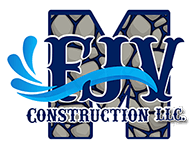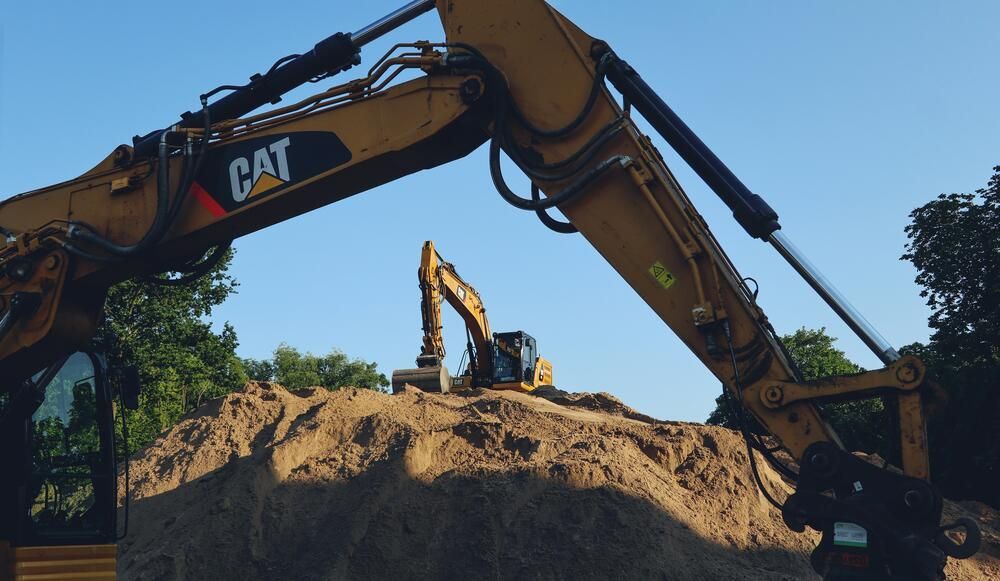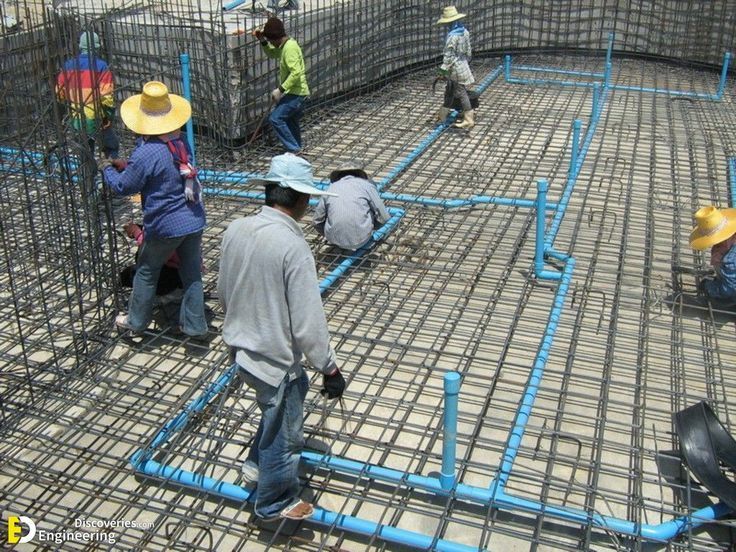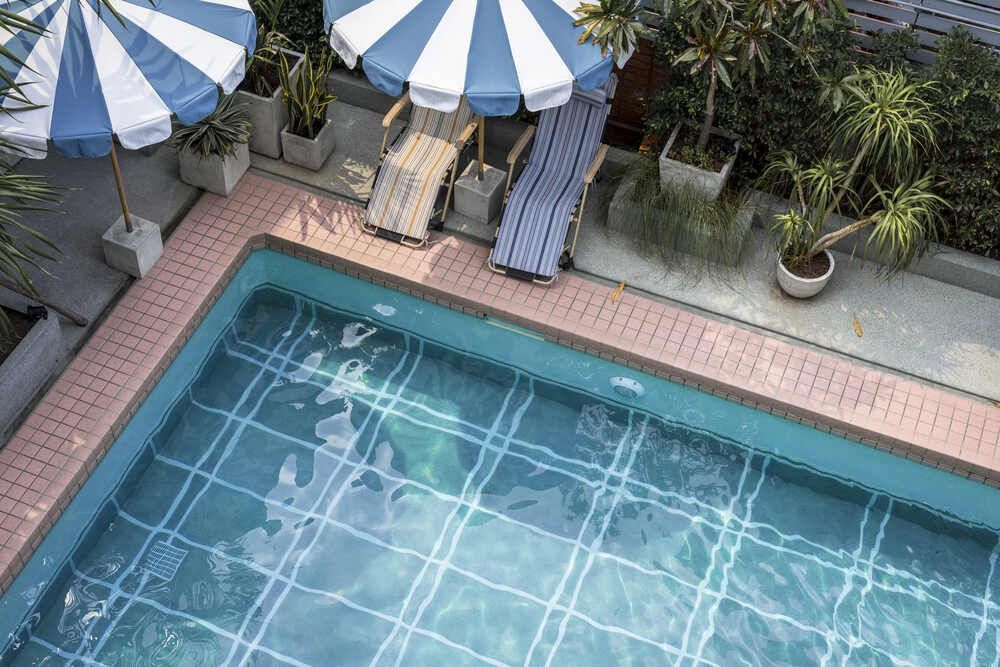How to Design and Install a Rock Waterfall Swimming Pool Slide: A Complete Guide
Table of Contents
- Key Takeaways
- How to Design a Rock Waterfall Swimming Pool Slide
- How Professionals Install Rock Waterfall Pools with Slides
- How to Select the Perfect Slide Design for Various Pool Shapes
- How to Enhance a Rock Waterfall Pool Slide with Lighting
- Frequently Asked Questions (FAQs)
- Transform Your Backyard with FJV Construction’s Stunning Pools and Waterfalls!
Key Takeaways
How to Design a Rock Waterfall Swimming Pool Slide
1. Assess the Pool Area
A successful rock waterfall pool slide starts with assessing the available space and existing pool layout. Proper evaluation helps ensure the slide integrates seamlessly with other swimming pool features while maintaining safety and functionality. Careful planning at this stage prevents costly mistakes and enhances the overall appeal of rock waterfall pools.
Why Pool Area Assessment is Important
- Maximizing Space Efficiency: Evaluating the pool area allows for the best placement of pool slides without overcrowding the space. A well-placed slide enhances usability while maintaining access to other swimming pool features such as seating areas and entry points.
- Ensuring Structural Compatibility: Not all pools can support the weight and flow requirements of rock waterfall pools. Assessing factors like deck strength, water circulation capacity, and drainage helps prevent structural issues and costly repairs down the line.
- Enhancing Visual Flow: A thorough assessment ensures the slide aligns aesthetically with the overall design of the pool. Positioning it in a way that complements the natural look of rock waterfall pools creates a cohesive and inviting backyard retreat.
How to Conduct a Thorough Assessment
- Measure Available Space: Taking accurate measurements of the pool deck, surrounding areas, and water depth is crucial. This data helps in determining the ideal slide dimensions and placement within the existing swimming pool features.
- Evaluate Water Flow Capacity: Understanding the pool’s current pump and filtration system ensures it can handle the additional demands of a waterfall slide. Upgrading equipment if necessary prevents future maintenance challenges and keeps water circulation smooth.
- Consider User Accessibility: Factoring in who will use the slide—children, adults, or both—affects the design choices. Ensuring easy entry and exit points enhances safety and usability while making rock waterfall pools enjoyable for all ages.
2. Choose the Right Materials
Selecting the right materials for rock waterfall pools is crucial to achieving a natural look, ensuring durability, and maintaining safety. The materials used must withstand constant water exposure, weather changes, and wear over time. Thoughtful material selection helps pool slides blend seamlessly with other swimming pool features while providing a smooth, enjoyable experience.
Why Material Selection Matters
- Longevity and Durability: The right materials prevent deterioration caused by water exposure and harsh weather conditions. Opting for materials like reinforced concrete or synthetic rock ensures rock waterfall pools remain structurally sound for years.
- Aesthetic Appeal: Choosing materials that mimic natural stone enhances the overall visual impact of swimming pool features. Natural-looking textures and colors help the slide integrate into the landscape without appearing artificial.
- Maintenance Requirements: Some materials require more upkeep than others, impacting long-term costs and effort. Non-porous options like sealed stone or fiberglass reduce algae buildup and make cleaning easier compared to porous natural rock.
How to Select the Best Materials
- Evaluate Weather Resistance: Materials should be tested for resistance to sun exposure, freeze-thaw cycles, and pool chemicals. Pool slides constructed from UV-resistant composites or treated natural stone perform better in fluctuating climates.
- Prioritize Slip Resistance: Safety is a top priority, and materials with textured surfaces help prevent slips and falls. Choosing rock surfaces with natural grip or applying specialized coatings enhances traction while maintaining the natural beauty of rock waterfall pools.
- Consider Weight and Installation Ease: Some materials, like lightweight artificial rock, simplify installation without compromising strength. Modular precast rock panels allow quicker assembly and customization to fit existing swimming pool features.
3. Design the Water Flow System
A well-designed water flow system is essential for rock waterfall pools to achieve a smooth, continuous cascade and an enjoyable slide experience. Proper planning ensures even water distribution across the slide surface while maintaining efficient circulation. The right system prevents water stagnation, reduces energy costs, and enhances the overall aesthetics of swimming pool features.
Why Water Flow Design is Essential
- Smooth Slide Experience: A consistent water flow ensures swimmers can glide safely and comfortably down the slide. Without proper flow, pool slides can become too slow or overly slippery, affecting usability.
- Preventing Water Pooling: Poor water management can lead to stagnation, causing bacteria and algae buildup. Strategic flow design directs water efficiently to filtration systems, keeping rock waterfall pools clean and healthy.
- Energy Efficiency: Optimized water flow reduces strain on pumps and lowers energy consumption. A well-balanced flow system helps swimming pool features operate smoothly without unnecessary wear on equipment.
How to Design an Effective Water Flow System
- Select the Right Pump Size: The pump should match the slide’s length and elevation to maintain adequate water pressure. Consulting with a pool professional ensures the pump provides consistent flow without excessive power consumption.
- Position Water Outlets Strategically: Installing outlets at the slide’s highest points and along curves enhances water distribution. This setup prevents dry spots and ensures even coverage across pool slides for a smoother ride.
- Incorporate Adjustable Flow Controls: Adding variable-speed pumps or flow control valves allows customization based on usage. Adjustable systems let homeowners control water pressure to match the preferences of different users.
4. Customize the Slide Design
Customization plays a key role in making rock waterfall pools stand out while catering to specific preferences and space requirements. From shape to special features, customizing a slide ensures it fits seamlessly into the overall pool environment. A well-designed slide enhances both the excitement and visual appeal of swimming pool features.
Why Customization is Important
- Unique Aesthetic Appeal: A customized slide creates a one-of-a-kind feature that complements the surrounding landscape. Personalizing elements like color, rock texture, and shape allows for a natural, harmonious look.
- Enhanced Functionality: Tailoring the slide’s length, curves, and slope can improve both safety and enjoyment. A gradual incline is better for young swimmers, while steeper designs cater to thrill-seekers.
- Seamless Integration: A custom design ensures the slide fits within the existing rock waterfall pools without looking out of place. Thoughtful placement aligns it with existing swimming pool features such as waterfalls or spas.
How to Customize a Pool Slide
- Incorporate Special Features: Adding grottos, tunnels, or hidden splash zones enhances excitement. These elements create an interactive experience and make pool slides more entertaining for users of all ages.
- Blend with Landscaping: Using plants, lighting, and surrounding décor to complement the slide improves aesthetics. Strategically placing tropical plants or LED lights enhances the natural beauty of rock waterfall pools at night.
- Choose a Tailored Shape and Size: Customizing the slide’s curves and length to match available space ensures a perfect fit. Working with a pool designer helps achieve a balance between aesthetics and practicality.
5. Add Finishing Touches
Finishing touches play a crucial role in enhancing the beauty and functionality of rock waterfall pools. Small details such as lighting, landscaping, and decorative accents can transform pool slides into a visually stunning and immersive experience. These final elements complete the overall design and ensure the swimming pool features blend harmoniously with the surrounding environment.
Why Finishing Touches Matter
- Enhanced Visual Appeal: Thoughtful details such as accent lighting and decorative rock formations add depth and character to the pool area. These enhancements make rock waterfall pools look more natural and inviting.
- Increased Safety: Proper lighting around pool slides improves visibility at night, reducing the risk of accidents. Slip-resistant finishes and well-placed handrails also contribute to a safer swimming experience.
- Cohesive Design: Finishing touches help tie together different swimming pool features for a seamless look. Matching colors, textures, and materials ensure the slide blends perfectly with the overall backyard theme.
How to Perfect the Finishing Touches
- Install Lighting Features: Adding LED lights within the waterfall or along the slide enhances the ambiance and usability at night. Waterproof lighting solutions provide both functional and aesthetic benefits.
- Incorporate Natural Elements: Surrounding the slide with lush greenery, boulders, or decorative gravel helps achieve a more organic look. These additions create a relaxing atmosphere that complements rock waterfall pools.
- Choose Functional Decor: Selecting features such as built-in seating, hidden grottos, or cascading water effects enhances the user experience. Thoughtful placement of these elements can elevate the visual and functional appeal of swimming pool features.
How Professionals Install Rock Waterfall Pools with Slides
Installing a rock waterfall pool slide requires skill, precision, and the right equipment to seamlessly integrate with existing swimming pool features, a demand that continues to rise as the global swimming pool construction market, valued at USD 8.3 billion in 2023, is projected to grow at a 4.1% CAGR to reach USD 12.3 billion by 2032.
Professionals follow a step-by-step process that focuses on safety, durability, and aesthetics. From site preparation to final touches, each stage plays a critical role in achieving a functional and visually appealing result.
1. Site Preparation and Structural Planning
Professional installers begin by thoroughly assessing the pool area to determine the best location for the slide within the existing rock waterfall pool. This includes evaluating soil stability, drainage capacity, and available space to ensure the slide fits securely.
Excavation and grading may be required to create a solid foundation that can support the weight of the slide and surrounding rock features. Structural planning also involves determining the water flow path to achieve a natural and consistent cascade effect.
2. Building the Slide Framework
Once the site is prepared, professionals construct the framework that will support the rock waterfall pool slide. This framework often consists of reinforced concrete, steel supports, or prefabricated fiberglass structures, depending on the design.
Proper reinforcement is essential to prevent shifting or cracking over time, especially in areas with heavy water exposure. The slide's slope and curves are carefully shaped to ensure a smooth and enjoyable ride while maintaining safety for swimmers.
3. Installing Plumbing and Water Circulation Systems
Efficient water circulation is key to maintaining the aesthetics and functionality of swimming pool features. Professionals install a dedicated plumbing system that connects the slide to the pool’s existing filtration and pump setup.
This involves positioning water jets at strategic points to create an even water flow across the slide surface. Proper installation ensures optimal water pressure, preventing dry spots or excessive splashing that could affect the slide's performance.
4. Placing and Securing Rock Elements
To achieve a natural look, professionals carefully place and secure artificial or natural rock elements around the slide structure. Each rock is positioned to enhance the waterfall effect while ensuring stability and balance within the rock waterfall pool.
Adhesives, grout, and hidden structural supports are used to lock the rocks in place, preventing movement over time. Attention to detail is crucial, as the rocks must blend seamlessly with the surrounding landscape and other swimming pool features.
5. Final Testing and Aesthetic Enhancements
Before completing the installation, professionals conduct thorough testing to ensure the slide is fully operational and safe for use. Water flow is tested for consistency, and adjustments are made to improve performance if necessary.
Additional aesthetic enhancements, such as LED lighting, textured coatings for slip resistance, and landscaping elements, are incorporated to create a visually stunning rock waterfall pool. This final stage ensures that the pool slide not only functions perfectly but also complements the overall backyard environment.
How to Select the Perfect Slide Design for Various Pool Shapes
Choosing the right slide design for different pool shapes ensures a seamless fit and enhances both functionality and aesthetics. A well-matched slide design complements rock waterfall pools by aligning with the pool’s layout, size, and existing swimming pool features. There’s a chart for various pool sizes to help make an informed decision. Careful planning helps maximize space, improve usability, and create an inviting backyard retreat.
1. Customize Slides for Freeform Pools
Freeform pools, with their irregular and curvy shapes, require slides that follow the natural contours of the pool. Professionals often recommend curved or spiral designs that blend effortlessly with the organic look of rock waterfall pools. A slide positioned strategically along the curves enhances visual appeal while ensuring enough space for other swimming pool features.
2. Integrate Slides with Rectangular Pools
Rectangular pools provide a structured layout, making it easier to install straight or gently curved slides. A streamlined slide design complements the clean lines of the pool while maintaining a modern, elegant appearance. Placing the slide along the pool’s length optimizes space and keeps the swimming area unobstructed.
3. Adapt Slide Designs for Kidney-Shaped Pools
Kidney-shaped pools present unique challenges due to their asymmetrical design, requiring slides with gentle curves to match the pool’s flowing shape. A well-positioned slide along the wider section of the pool creates a natural look while maintaining balance in the design. This approach helps preserve open swimming areas while enhancing the fun and beauty of rock waterfall pools.
4. Match Slides with L-Shaped Pools
L-shaped pools offer distinct zones, making it ideal to install slides at the shorter leg to create a dedicated play area. A slide that follows the pool’s corner can provide a fun and dynamic focal point while keeping the main swimming section open. Choosing rock-textured slides ensures the design blends well with other swimming pool features for a cohesive look.
5. Consider Slides for Circular Pools
Circular pools often have limited deck space, so compact slide designs with steep yet controlled descents work best. Placing the slide slightly off-center can prevent overcrowding while maintaining a balanced look. Integrating rock waterfall elements around the slide helps create a natural and visually appealing addition to rock waterfall pools.
How to Enhance a Rock Waterfall Pool Slide with Lighting
Incorporating lighting into a rock waterfall pool slide enhances both aesthetics and functionality, creating an inviting atmosphere for evening swims. Thoughtfully placed lighting highlights the natural beauty of rock waterfall pools while improving safety around the slide area. Choosing the right lighting solutions ensures seamless integration with other swimming pool features, making the pool enjoyable at any time of day.
1. Choose the Right Type of Lighting
Selecting the right lighting is crucial for enhancing the visual appeal and functionality of rock waterfall pools. LED lights are a popular choice due to their energy efficiency, long lifespan, and customizable color options. Fiber optic lighting offers a subtle glow, creating a soft, ambient effect that highlights the natural contours of the waterfall and slide.
2. Strategically Place Lights for Maximum Effect
Positioning lights correctly ensures that the pool slide and surrounding rock features are beautifully illuminated without harsh glare. Placing lights within the crevices of the rock waterfall pool enhances the cascading water effect, making the slide more visually appealing. Underwater LED fixtures can be installed along the slide’s edge to create a glowing path that guides swimmers safely at night.
3. Enhance Safety with Proper Illumination
Proper lighting improves visibility and reduces the risk of accidents, especially around wet and slippery areas of pool slides. Illuminating stairways, entry points, and landing zones ensures that swimmers can see their surroundings clearly. Low-voltage lighting options provide enough brightness for safety without overwhelming the relaxing ambiance of rock waterfall pools.
4. Incorporate Color-Changing Effects for Ambiance
Adding color-changing lights can transform rock waterfall pools into a dynamic visual experience. Programmable LED systems allow customization of colors and brightness levels to suit different moods or special occasions. Combining warm and cool tones helps highlight the movement of water while creating a visually stunning nighttime retreat.
5. Integrate Smart Lighting Controls
Smart lighting systems offer convenient control options that can enhance the overall experience of rock waterfall pools. Mobile apps and remote controls allow users to adjust lighting intensity, change colors, and schedule automatic settings. This level of customization not only adds convenience but also helps save energy by optimizing lighting usage based on pool activity.
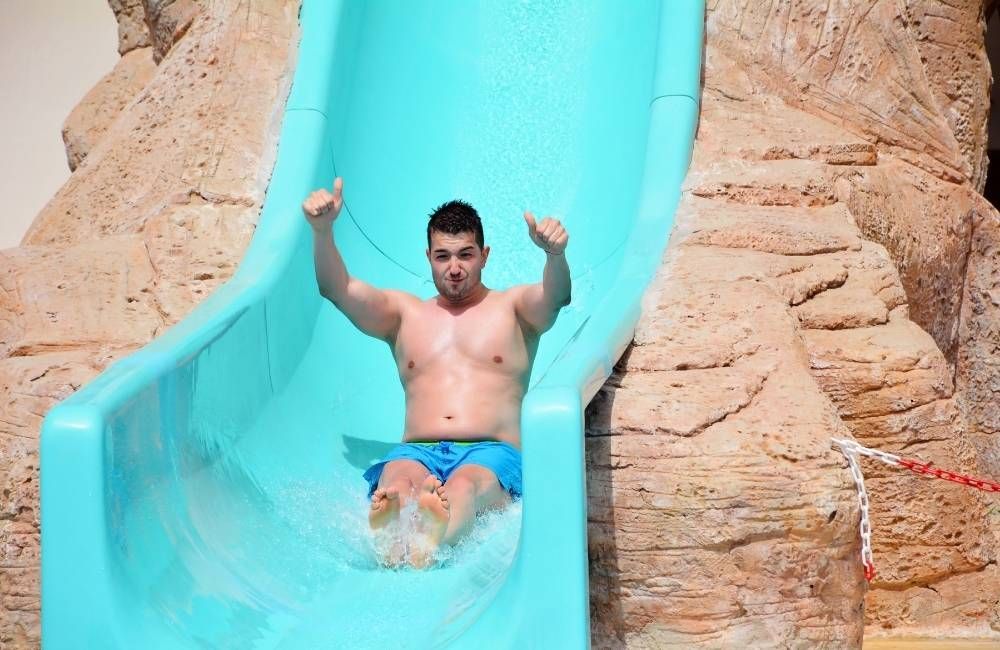
Frequently Asked Questions (FAQs)
What are the benefits of adding a rock waterfall pool slide to an existing pool?
A rock waterfall pool slide enhances both the visual appeal and functionality of an existing pool by creating a resort-like atmosphere. The soothing sound of cascading water adds a relaxing element, while the slide provides endless fun for swimmers of all ages. These swimming pool features can also increase property value by making the backyard more attractive to potential buyers. Additionally, rock waterfall pools contribute to better water circulation, helping to keep the pool clean and well-maintained.
How does climate impact the installation and maintenance of rock waterfall pools?
Climate plays a significant role in the longevity and upkeep of rock waterfall pools, especially in areas with extreme temperatures. In colder climates, freezing temperatures can cause cracks in the rock structure and damage the slide if not properly winterized. Warmer climates with high sun exposure may lead to fading and wear on materials, requiring UV-resistant coatings. Regular maintenance and seasonal adjustments help ensure pool slides and other swimming pool features remain in optimal condition year-round.
Can a rock waterfall pool slide be installed in a small backyard?
Yes, a rock waterfall pool slide can be customized to fit smaller backyard spaces without compromising aesthetics or functionality. Compact designs with steeper inclines can maximize space while still providing an enjoyable slide experience. Careful planning of swimming pool features such as strategic rock placement and smart landscaping can make the area feel larger. Professional designers can create a tailored solution that enhances the backyard while maintaining a natural and balanced look.
What are the best materials for a low-maintenance rock waterfall pool slide?
Materials such as fiberglass, faux rock panels, and sealed natural stone are ideal for low-maintenance rock waterfall pools. Fiberglass slides are durable, resistant to algae growth, and easy to clean with minimal upkeep. Faux rock panels provide the look of natural stone while being lightweight and requiring less maintenance compared to real rock. Sealed natural stone helps prevent water absorption and algae buildup, keeping the swimming pool features looking pristine for longer.
How can landscaping enhance the look of a rock waterfall pool slide?
Strategic landscaping can elevate the appearance of rock waterfall pools by adding lush greenery, decorative rocks, and lighting elements. Native plants and tropical foliage can soften the hard edges of the slide and create a more natural, inviting environment. Proper placement of plants can also provide shade and privacy while complementing the existing swimming pool features. Well-planned landscaping enhances the overall ambiance, making the pool area feel like a private retreat.
Transform Your Backyard with FJV Construction’s Stunning Pools and Waterfalls!
FJV Construction in Danbury, CT, specializes in designing and building breathtaking swimming pools and waterfalls that bring luxury and relaxation to any outdoor space. With expert craftsmanship and attention to detail, our team creates custom rock waterfall pools that seamlessly blend natural beauty with modern functionality. Whether enhancing an existing pool in Danbury, CT, or starting from scratch, FJV Construction delivers top-quality swimming pool features that elevate your backyard aesthetics in Danbury, CT, and provide years of enjoyment.
Contact us today for a consultation!
Our Info
Monday to Friday from 7 am to 6 pm
Saturdays from 8 am to 5 pm
We Accept Cash and Checks
LOCATION
We Cover 80 Miles around Bethel,
Danbury, and Brookfield
Bethel, Connecticut 06801
Danbury, Connecticut 06810
Brookfield, Connecticut 06804
Navigation
Copyright FJV Construction, All Rights Reserved
